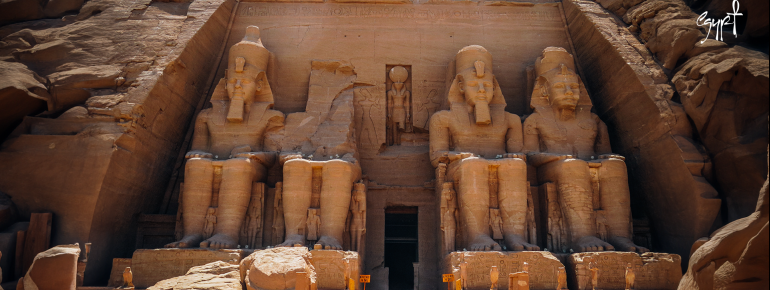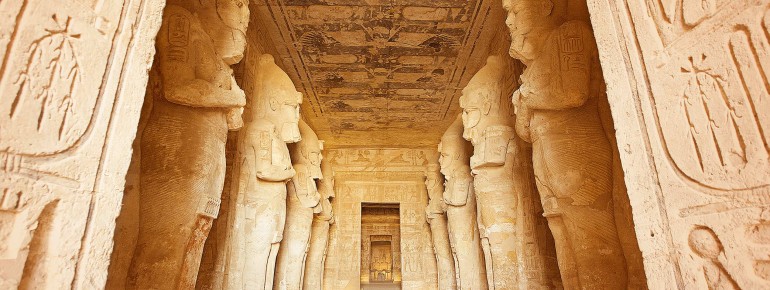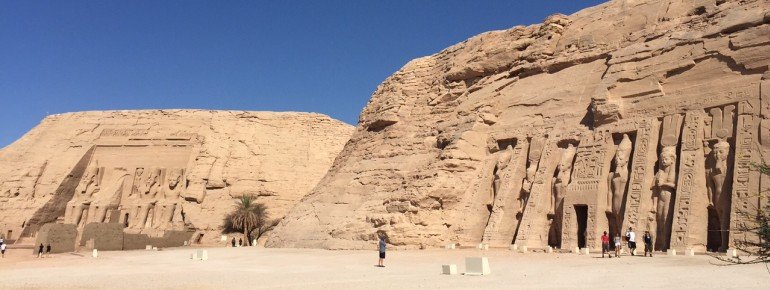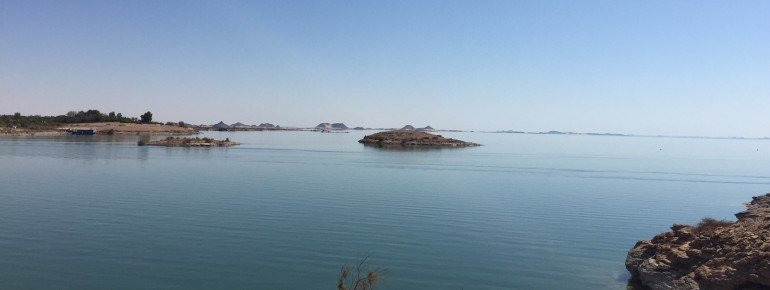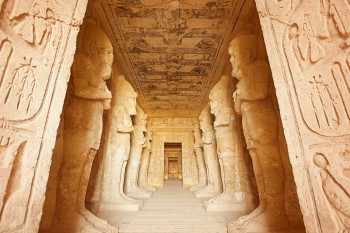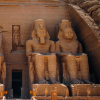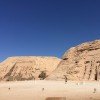Contents
Description
Abu Simbel is the southernmost town in Egypt. It is located just before the border with Sudan. There are two rock temples here, which were built by Ramses II in the 13th century BC. The larger temple is dedicated to the glory of the famous pharaoh, while the smaller one was built in memory of Ramses' wife Nefertari. Both buildings are UNESCO World Heritage Sites. They are not only famous for their unique rock architecture. They were originally located around 50 meters from the current site. Due to the rising waters of Lake Nasser in the 1960s, the two cultural assets were in danger of sinking and therefore had to be moved.
The architecture of the temple complex
The entrance to the great temple of Ramses is lined with four colossal statues depicting the pharaoh. Each of them is 21 meters high. The king's lips alone are each one meter long and the distance between his ears is over four meters! Inside the temple is a pillared hall with further colossal statues of the pharaoh. To demonstrate his power, the temple walls are lined with images of war.
The smaller temple dedicated to Ramses' wife Nefertari stands in stark contrast to this. While the large temple with its depictions of war has a dark and imposing effect on the visitor, Nefertari's complex is characterized by bright reliefs and delicate depictions of the tender queen.
The Miracle of the Sun in the Temple of Ramses
The so-called “Miracle of the Sun” in the Holy of Holies of the Temple of Ramses is a worldwide unique phenomenon. This event takes place twice a year. For about 20 minutes at a time, the sun's rays illuminate exactly three of the four seated statues of the gods, which are located at the back of the temple, the so-called Holy of Holies. The illuminated figures represent Amun-Re, the highest of the gods, the deified Pharaoh Ramses himself and the god Re-Harachte. In contrast, Ptah, the god of the realm of the dead, sits in the dark. This solar miracle always occurs around February 21 and October 21.
Historical Information

Construction of the Temples
The exact date of the construction of the temples cannot be determined with certainty. It is assumed that they were built between 1260 and 1250 BC. Around this time, Pharaoh Ramses II’s wife Nefertari also passed away. The two temples were inaugurated in the 24th year of Ramses’ reign.
Rediscovery and Excavation
By the 19th century, the Great Temple of Ramses II was almost entirely buried in sand. It was rediscovered in 1813 by the Swiss explorer Jean Louis Burckhardt. Four years later, the Italian Giovanni Battista Belzoni began excavating the temple. Starting in 1828, the complex was studied by a Franco-Italian team of scholars. The Great Temple was not fully excavated until 1909.
Relocation to Abu Simbel
When plans for the construction of the new Aswan Dam began in the 1950s, the temples of Abu Simbel were at risk of being submerged by the reservoir. In 1960, UNESCO officially called for international assistance to save the site. Various solutions were discussed, and in 1963, the decision was made to cut the temples into large rock blocks and reassemble them at a higher location. This monumental project was carried out by an international team and completed by 1968.
Interesting facts
- Abu Simbel Temples is among the 5 best rated Tourist Attractions in Egypt.
How to get there
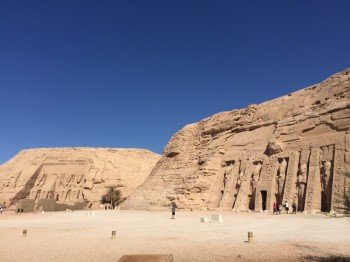
Abu Simbel is the southernmost location in Egypt, near the Sudanese border. Tourists typically reach the temples from Aswan, either by plane or via a car convoy. Usually, tour buses gather in the morning at a designated meeting point in Aswan and then travel together under police escort to Abu Simbel. The journey through the desert takes about three hours. In summer, it's common to witness a mirage on the return trip in the afternoon. The desert sand can appear as though it’s a shimmering water surface, creating an optical illusion caused by the heat.

